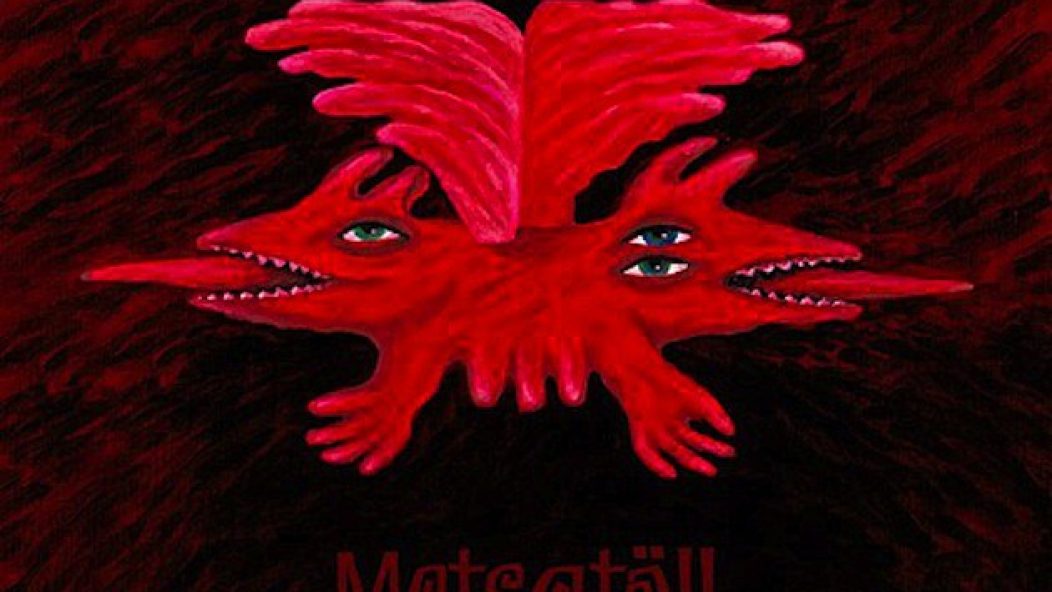
Metsatöll - Karjajuht
. . .
Metsatöll are, for me, one of the more interesting folk-metal bands currently active. Their music has a vitality and bounce that some of the more “serious” folk-metal groups (like, say, Drudkh or Winterfylleth) lack; however, they also have a degree of reservation that you wouldn’t get from Korpiklaani or Ensiferum. Metsatöll also differ from their peers in making liberal use of Estonian folk instruments and the Estonian language (neither of which are particularly well-known to the outside world), less conventional time signatures, and a strange yet compelling art style that borrows liberally from the obscure 1980s animated film Suur Töll about a legendary Estonian giant. On paper, this seems a little too bizarre to work. In practice, it turns out some of the most vital folk-metal Iíve heard in ages. If you’ve ever seen the video for the band’s 2010 single “Vaid Vaprust (Only Bravery)”, you no doubt know the virtuosity with which Metsatöll synthesizes their various elements.
Metsatöll’s latest album, Karjajuht, continues these tendencies, but there are some new stylistic turns as well. Firstly, this might be Metsatöll’s heaviest album yet from a production standpoint, and on a track like the title track, the thick-as-ice guitar tone and straight-to-your-face drums blend perfectly with the bagpipes and flutes. In keeping with the tone, these songs emphasize “metal” to a larger degree than some of Metsatöll’s older work. Where tracks like “Vaid Vaprust” and “Muhu Oud” had grooved and swung, new songs like “Mullast” and “Lööme Mesti” rightly thrash. Were it not for the folk instruments and the commanding baritone of Markus Teeäär, one might be forgiven for thinking these tracks to be ’00s-era Exodus cuts. However, these improvements do not come at the expense of Metsatöll’s previous innovations. The band remain accomplished folk musicians, with the standout being the Estonian fiddle. It’s an oddly dissonant instrument with synergistic qualities that aren’t immediately apparent, but it quickly proves its worth on “Külmking”. Likewise, “Must Hunt” retains the signature drinking-arm-swinging march that has almost become Metsatöll’s signature cadence. It’s the perfect blend of a classic sound mixed with new innovation.
Karjajuht may not be the best album of the year, but it is a very good album, and that in itself raises an interesting point: the emergence of folk metal as a serious and legitimate metal subgenre. No longer simply the “drunk ren fair” gimmick that many have derided it as being since emerging over the past decade, folk metal has in large part matured. Bands such as Metsatöll, Forefather, or Tengger Cavalry approach their sound with vigor and swagger but do so in a way that does not come across as contrived or cartoonish. They do for folk metal what a band like Immolation does for death metal: strip away the over-the-top antics and arrive instead at the core of the subgenre, something majestic and forceful but with enough brass to keep the music from becoming over-serious and esoteric. Elitists may still turn up their nose at the concept of melding folk traditions with metal as something for nerds, but it’s becoming harder to do so with each passing year. And, at the very least, this album has it pretty much ensured that it will be very hard to dismiss Metsatöll as anything other than a force to be reckoned with.
Karjajuht will be available in Europe as of March 7, in UK as of March 9. The exact release date in USA will be announced as soon as possible.
. . .











